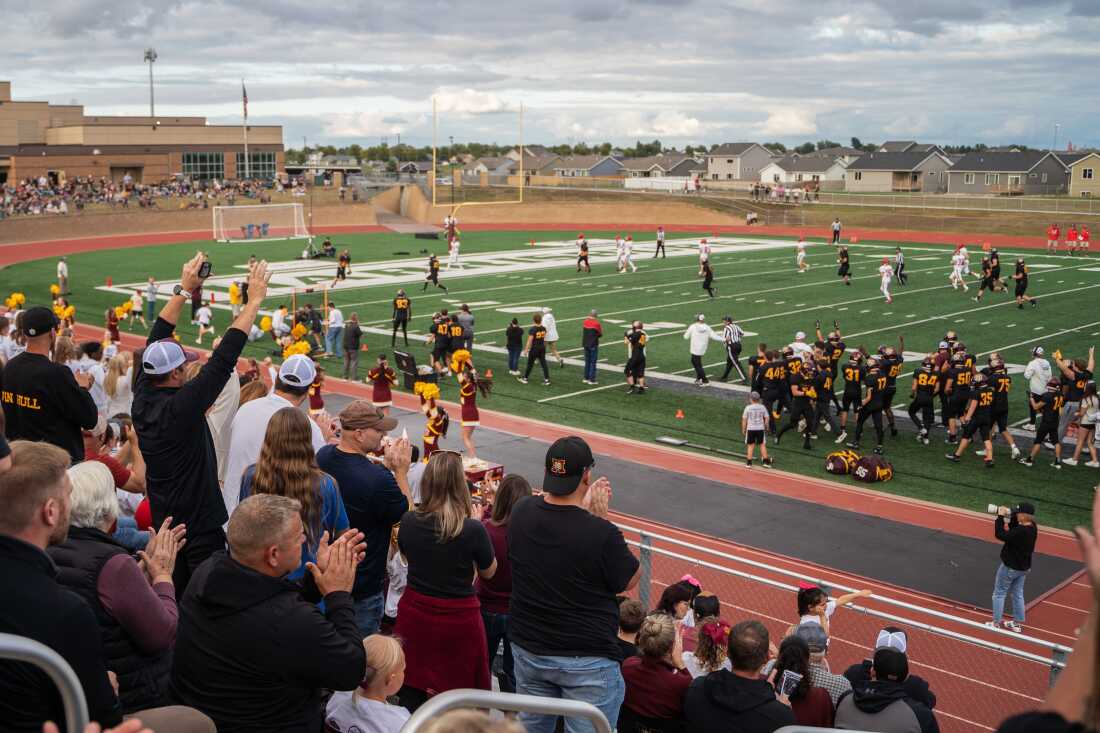
Harrisburg High School football fans cheer on the team in Harrisburg, S.D. South Dakota Public Broadcasting carries local high school games on air and online, but it has been hit hard after losing federal funding.
Kelcey Schroder for NPR
hide caption
toggle caption
Kelcey Schroder for NPR
HARRISBURG, S.D. — Kids clambered onto a fire truck painted white, its rooftop sporting a huge stuffed tiger and a flag waving high for Harrisburg High’s football team in this suburb of Sioux Falls.
People watched college games on the four 50-inch televisions gracing one side of the truck; others grilled burgers nearby.
At the tailgate, parents talked about football, work, kids and — with a little prodding — what they rely on for news.
“Mainly just a Fox guy,” says Aaron Zahn, the truck’s owner, who builds grain elevators. He likes Gutfeld! — the conservative late-night comedy show on Fox News.
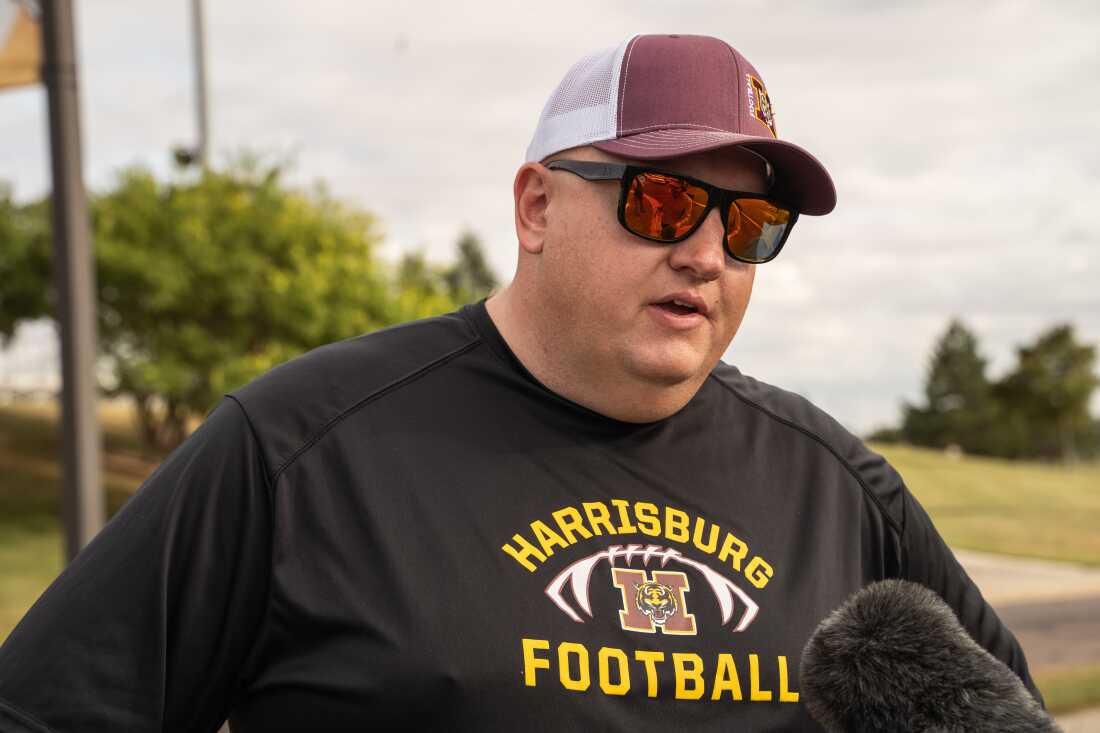
At a Harrisburg High School football tailgate, when asked where he gets his news, Aaron Zahn shares that he mostly watches Fox.
Kelcey Schroder for NPR
hide caption
toggle caption
Kelcey Schroder for NPR
Dawn Bures, whose son, Harrison, plays wide receiver for the Tigers, says she follows “citizen journalists on the internet,” citing social media influencer Jessica Reed Kraus’ House Inhabit.
When it comes to public media, both say they support President Trump’s push to take back all federal funds.
“I think that the media can be easily influenced to produce media that leans one way or the other, so I actually think that’s probably a good choice,” says Bures, who works in interior design and sells self-care products.
The future of public media in South Dakota
That largely reflects the sentiments of most — though not all — of a dozen people who came to the football stadium to see the Tigers rout the Yankton Bucks. A sports health executive said he relies on friends to text him about news developments; a retired accountant said he watches Fox News yet loves PBS nature shows; a reading intervention teacher said she appreciates the educational shows and apps that public media provides.
Under Trump’s pressure, congressional Republicans pulled back all $1.1 billion in federal funding that had been approved for public media for the next two years, starting on Oct. 1. Most of that was to go to local PBS and NPR stations.
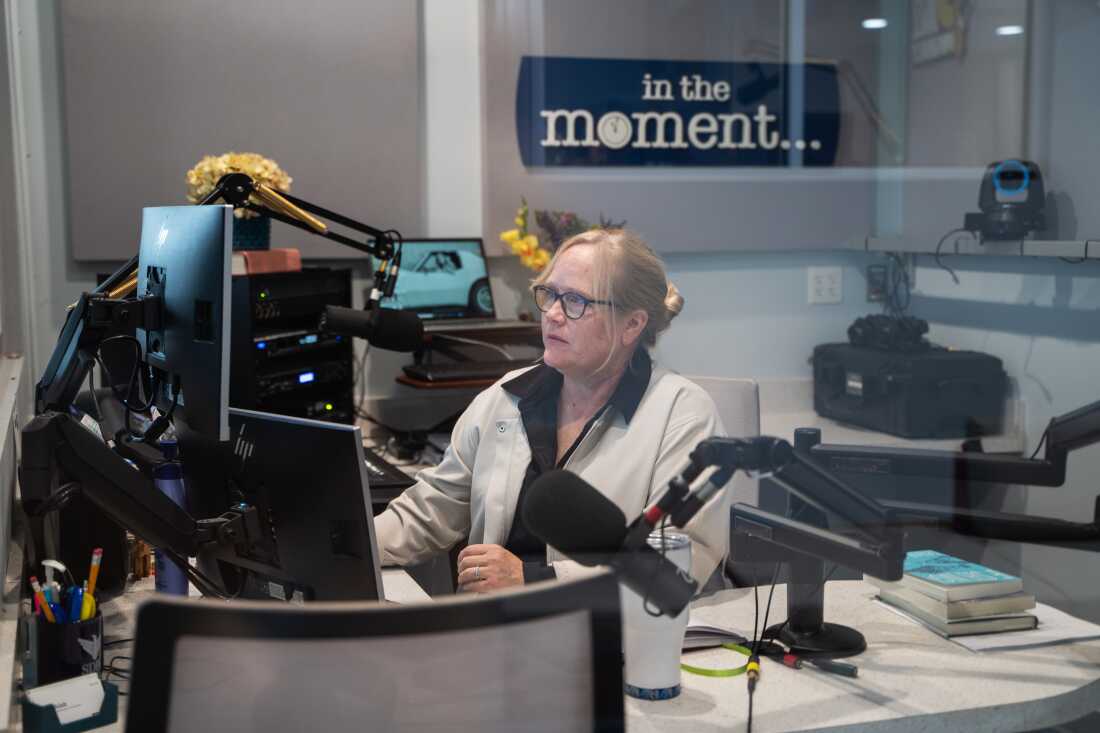
Lori Walsh hosts the soon-to-be canceled In the Moment, which currently plays three times a day.
Kelcey Schroder for NPR
hide caption
toggle caption
Kelcey Schroder for NPR
South Dakota’s statewide public media network owns both television and radio stations. And it has been hit hard.
“We’re not a big operation, and we’re not a huge staff,” says Julie Overgaard, its executive director since 1997. “It’s like a cookie or a pie, and you keep trimming around the edges so that you don’t actually impact the meat of what you’re doing. But $2.3 million, there is no way to trim around that.”
A disaster averted, then a blow from Washington
South Dakota Public Broadcasting had already sidestepped one financial catastrophe. In December, Kristi Noem — then the state’s Republican governor — proposed cutting most of the state funds that the network receives, shortly before she left to become Trump’s secretary of homeland security. The Republican-dominated state legislature in Pierre knocked that down.
In July came the thunderbolt from Washington. It took out nearly a quarter of South Dakota Public Broadcasting’s budget.
“A lot of people really consider SDPB to kind of be the rock and [to] do the work — the important work — of making sure that all of our news in South Dakota doesn’t eventually get piped in from someplace else,” Overgaard says.
South Dakota Public Broadcasting officials had hoped they could appeal to the state’s U.S. senators, Senate Majority Leader John Thune and Mike Rounds, both Republicans who have appeared regularly on their shows.
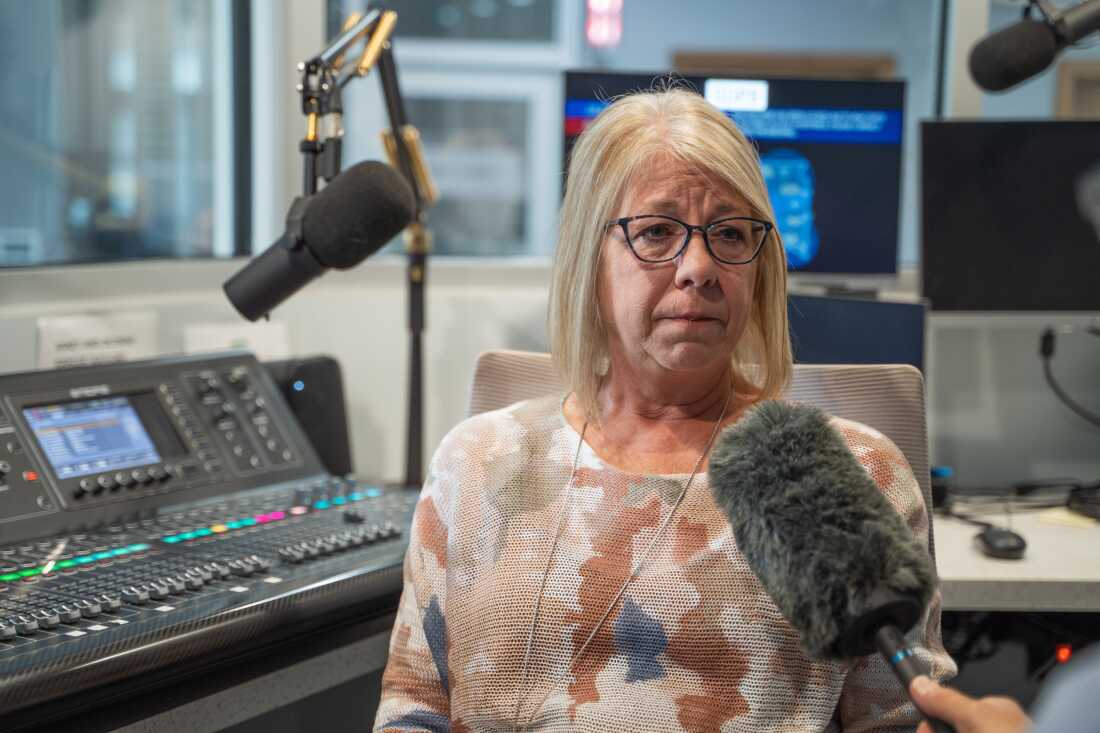
Julie Overgaard has been the executive director of South Dakota Public Broadcasting since 1997.
Kelcey Schroder for NPR
hide caption
toggle caption
Kelcey Schroder for NPR
Thune nonetheless moved Trump’s rescission plan, which also included billions of dollars cut from foreign aid. Rounds says he has arranged for a $9 million federal grant for imperiled stations serving tribal populations. His office says it’s coming from the Bureau of Indian Affairs. Details are scant: It’s unclear when or how that money will be distributed.
South Dakota Public Broadcasting also highlights Native American issues, but executives say it doesn’t qualify for that grant.
To make ends meet, it has slashed its newsroom to just four journalists from 11. It has dropped television news shows, educational initiatives and a daily, hourlong public affairs radio show called In the Moment.
“This is our signature show, and it’s crushing to not have it,” says Cara Hetland, the director of radio and journalism content.
Much of the wrath from Trump and the Republican Party was directed at PBS and NPR, not local stations, for what conservatives contend is liberal bias — a charge the networks reject. Some Republican lawmakers even took pains to praise offerings from their local stations.
In an irony she has not overlooked, Overgaard says she’s more likely now to take shows from NPR and other outside producers to fill the holes.
“It costs more money to create local programming than it does to purchase national programming,” Overgaard says. “That’s just a fact of life.”
Pain from federal cuts ripple throughout the U.S.
This week marks the start of a new era for public media: Without federal subsidies, the Corporation for Public Broadcasting, the nonprofit that has funneled those dollars to public media outlets for nearly 60 years, has laid off nearly all its staff and is winding down operations. Repercussions have been equally stark around the country, though they have taken different forms.
There have been layoffs at public television and radio stations large and small, in markets including Melbourne, Fla., South Bend, Ind., Charlotte, N.C., Houston, Boston, Washington, D.C., and Los Angeles. In all, stations have laid off more than 400 employees, according to former NPR employee Alex Curley, who is tracking job cuts online. Classical music stations have been affected. So have those focused on news.
PBS has laid off 15% of its workforce. Penn State is closing the station it owns after the university’s board rejected a plan to sell it to WHYY in Philadelphia. New Jersey PBS is slated to close next year.

The NJ PBS logo appears on a smartphone screen. New Jersey PBS may shut down next year.
Photo illustration by Thomas Fuller/SOPA Images/LightRocket via Getty Images
hide caption
toggle caption
Photo illustration by Thomas Fuller/SOPA Images/LightRocket via Getty Images
Mississippi Public Broadcasting intends to drop all programs, apps and services that come from PBS and NPR, including PBS Kids and other educational offerings. Officials say they will continue to produce local content, including a gardening radio show and a TV show about the state’s attractions and culture.
The united front that the national public media giants have maintained for so long is also among the casualties. In a hearing at a federal court in Washington, D.C., on Tuesday, lawyers for NPR argued that the Corporation for Public Broadcasting (CPB) had unlawfully awarded a $57.9 million grant to a consortium of other public media institutions to operate a satellite that helps power the public radio system.
NPR has run the satellite for more than four decades; its executives say a top CPB executive told them in April that they would be given a three-year renewal, only to have that reversed days later after Trump publicly accused NPR and PBS of bias and called for all federal funding for them to cease.
NPR’s lawyers are arguing on First Amendment grounds that CPB is wrongly yielding to Trump’s order that the network receive no federal funds. CPB denies this.
Trump supporters see benefits in local public media
Public media executives said from the outset that if Congress killed subsidies, those stations that serve rural and tribal audiences would be hit the hardest — stations like South Dakota Public Broadcasting.
South Dakota is Trump country. And yet, like in many other rural regions, people here find that public media serves a need as other local news outlets are increasingly hard to come by.
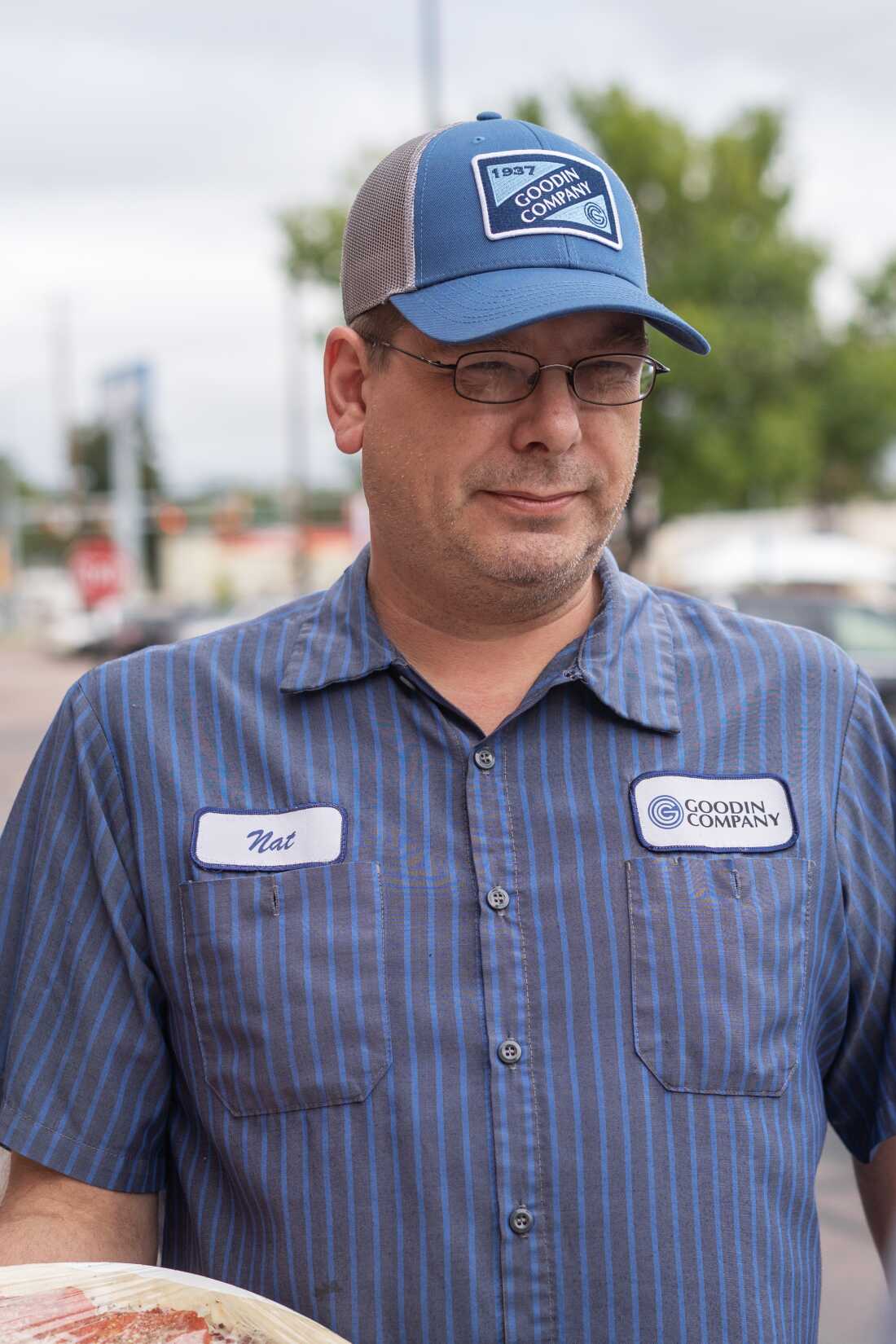
Nat Van Gorkum, manager of a plumbing-supplies warehouse, says he opposes cutting money for public broadcasting and supports President Trump.
Kelcey Schroder for NPR
hide caption
toggle caption
Kelcey Schroder for NPR
“Trump is vindictive, as we all know. I’m with the guy,” Nat Van Gorkum, a plumbing-supplies manager, told me outside a take-and-bake pizza shop in Sioux Falls. “I think the reason he’s doing it is you guys have gone a hell of a long ways to the left in the last five or 10 years.”
Even so, Van Gorkum says, he opposes cutting money for public broadcasting. “I grew up watching Mister Rogers, Sesame Street, stuff like that. That’s a good thing,” Van Gorkum says.
In fact, even people who said they support the funding cuts voiced their appreciation for what South Dakota Public Broadcasting offers: Ken Burns documentaries, science programs, kids’ shows, jazz and Lori Walsh, the host of the soon-to-be canceled In the Moment, which currently plays three times a day.
“Part of my job is to create that kitchen table across South Dakota that everybody gathers around and talks about what’s happening here and what matters to us,” Walsh says. Her shows have focused on scientific developments, local writers, Indigenous artists in South Dakota, political debates and more.
“We’re going to be here for our neighbors every day — as long as we are allowed,” Walsh says.
Walsh served for six years in the U.S. Marine Corps as a Korean language linguist. She says she listened to recordings of North Korean officials who didn’t realize their exchanges were being overheard.
She then returned to South Dakota and went to school for journalism. After a stint as a freelancer for the Argus Leader, Walsh says, she realized that speaking with people and exploring what they had to say proved the most fulfilling assignment of all.
“We’re … modeling how to have conversations with people that you might not get to hear, that you might not agree with, that you might have a different opinion of,” Walsh says. “If you listen, you also understand how to do that in your own life.”
Preserving local sports, arts and politics at a cost

Dawn Bures supports ending federal funds for public media but says she values South Dakota Public Broadcasting for carrying so much high school sports.
Kelcey Schroder for NPR
hide caption
toggle caption
Kelcey Schroder for NPR
Dawn Bures, who told me at the Harrisburg football game that she supports ending federal funds for public media, nonetheless says she values South Dakota Public Broadcasting for presenting so many high school sports games on the air and online.
“My dad can’t be here,” Bures says, “and he can watch via a link for that.”

Cara Hetland is the director of radio and journalism content for the South Dakota public media system.
Kelcey Schroder for NPR
hide caption
toggle caption
Kelcey Schroder for NPR
In convincing state lawmakers to preserve state funding for South Dakota Public Broadcasting, the network vowed to keep the high school competitions and the gavel-to-gavel coverage of the state legislature.
So it’s the other stuff — the local news and educational offerings — that Overgaard, the executive director, has cut to the bone.
Overgaard tells me that she made the cuts without consulting Hetland, the head of radio and journalism content. The two sit side by side.
When asked about the cancellation of In the Moment, Hetland looks at her boss and winces, even as she says she’s up for the challenge of preserving it — somehow.
She defines that challenge this way: “How do you redefine what public affairs sounds like, and how can you still provide that but maybe in a different way?”
Maybe the show could become a shorter podcast and excerpts could play during NPR news programs, she suggests. But the staff would still be smaller than it is now.
“Rage giving” bolsters stations for now
Republicans argue that people who like public media should support it financially. Given the current circumstances, Overgaard agrees.
“If we as South Dakotans value this, if we want these things to be, we’re going to have to pony up and raise the money to make sure they happen.”
Count Michael Haskett in. I recently found him making crepes for an early lunch crowd at his delicatessen in the historical downtown area of Sioux Falls.
“Fox News, MSNBC, all of these corporate giants, they’re owned by somebody. You don’t know what their motives are,” Haskett says.
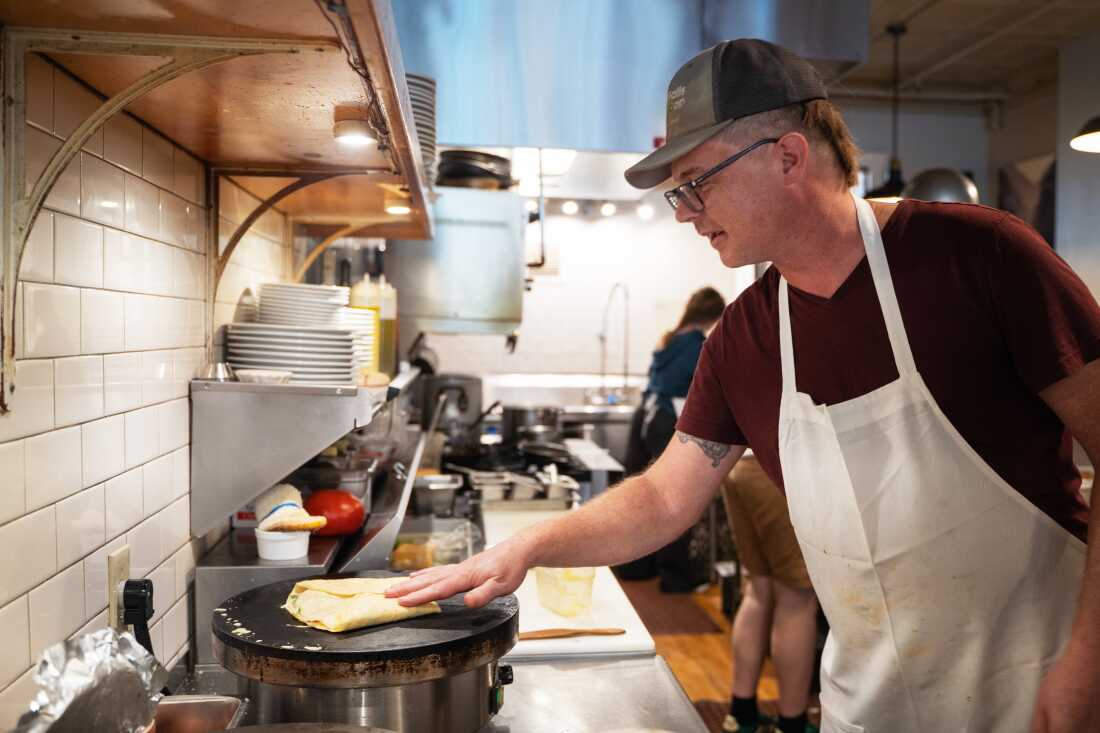
Michael Haskett makes crepes at the delicatessen he owns in the historical downtown area of Sioux Falls. He says he relies on NPR and South Dakota Public Broadcasting to tell him what’s happening around the area, the nation and the world.
Kelcey Schroder for NPR
hide caption
toggle caption
Kelcey Schroder for NPR
He grew up in Sioux Falls, went to culinary school in New York’s Hudson Valley and became a public radio junkie. He says he relies on NPR and South Dakota Public Broadcasting to tell him what’s happening around the area, the nation and the world.
“So, yeah, I’m very upset that we’re defunding a very important news source, a very trustworthy news source, because it doesn’t fit into one political party’s agenda,” Haskett says. He says he gives money to South Dakota Public Broadcasting and to Minnesota Public Radio, which operates a small station in Sioux Falls.
At many stations, contributions are through the roof since Trump threatened the funding — and especially since Congress took it away. Louisville Public Media’s CEO, Kenya Young, called it “rage giving.” And that’s happening at South Dakota Public Broadcasting too.
Comments from new donors reflect a range of motives. A few cited ABC’s suspension of Jimmy Kimmel and CBS’s cancellation of The Late Show With Stephen Colbert; another invoked the president’s lawsuit against The New York Times.
By and large, however, comments noted outrage over the elimination of federal funds, pointing to all that South Dakota Public Broadcasting offers.
“Our family has loved SDPB for as long as I can remember,” a woman who now lives in Miami wrote. “My dad put a radio in every room of our house to ensure seamless listening each morning.”
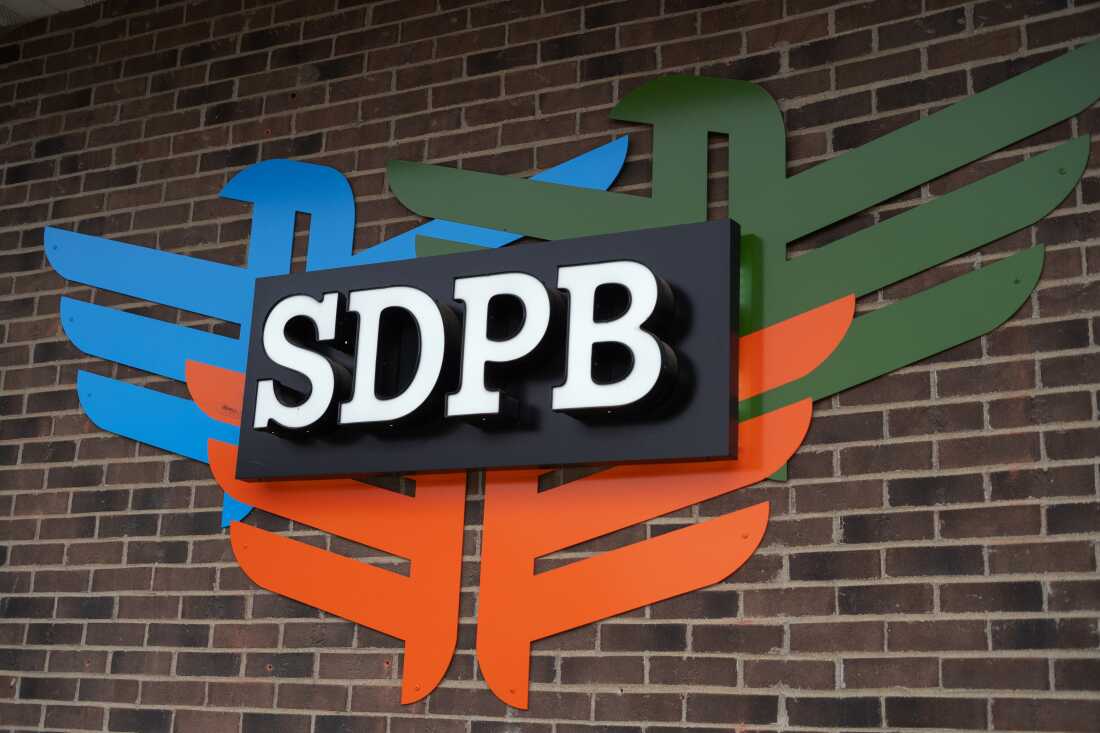
A sign for South Dakota Public Broadcasting hangs outside its office in Sioux Falls.
Kelcey Schroder for NPR
hide caption
toggle caption
Kelcey Schroder for NPR
Ryan Howlett, who heads the private foundation that helps raise money for the South Dakota network, says it has raised $1.7 million more in the past three months than it did in the same period last year. He says the foundation hopes to raise enough to bring back some of the journalists who are being laid off.
But station officials in South Dakota, as elsewhere, know they cannot count on the same level of donations year after year.
“How much of this is going to come in every year?” Overgaard asks. “And how can, with all the changes, with the different resources we have, we still provide the services that South Dakota needs and that they rely on?”
Disclosure: This story was reported and written by NPR media correspondent David Folkenflik. It was edited by deputy business editor Emily Kopp and Managing Editors Gerry Holmes and Vickie Walton-James. Under NPR’s protocol for reporting on itself, no NPR corporate official or news executive reviewed this story before it was posted publicly.
Source link

